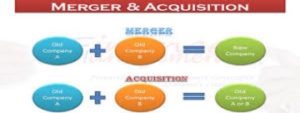What are Event Driven Investment Strategies?
Event driven investment (EDI) strategies attempt to profit from the occurrence of pricing inefficiencies caused by a corporate event. However, more recently, this definition has expanded to include additional events (discussed later) that can significantly affect the company’s operations. Event driven trading itself falls under the category of Alternative Investments. This type of trading is a common mainstay amongst hedge fund strategies.
The event may have already happened or may happen in the future. It may still be in the planning stage or is currently happening. The event itself maybe be successful or not as determined by subsequent stakeholder actions. However, an investment or trade based upon this corporate action renders it an event driven investment strategy.
This article explains the background to event driven investment strategies and gives selected examples of various forms of implementation. We show application procedures for these strategies and the major risks associated with them. Then, we explain how hedge funds or other professionals are using these strategies and how investors can gain exposure. The article concludes with a summary of the analysis and suggestions for further reading.
Special Situations
Event driven investment strategies are sometime referred to as special situations investing. These terms are interchangeable, but for this article, we will simply refer to EDI. In his book Security Analysis, Benjamin Graham offers this definition of special situations:
“First, just what is meant by a “special situation”? Convention has not jelled sufficiently to permit a clear-cut and final definition. In the broader sense, a special situation is one in which a particular development is counted upon to yield a satisfactory profit in the security even though the general market does not advance. In the narrow sense, you do not have a real “special situation” unless the particular development is already under way”
The Aim
The aim of event driven investing is to produce consistently high risk-adjusted returns that do not correlate with the market. The investment manager directs their focus to analysing the change to a stock price due to the event. This is in contrast to a traditional approach, which focusses more on analysing and researching company earnings or dividend streams.
The trader can achieve this low correlation by taking advantage of a temporary mispricing, which is less sensitive to movements in the broader equity market than traditional long-only equity investments. Depending on the type of event, the stock price of a company fluctuates during this period of change. As such, event driven strategies attempt to exploit this stock price volatility.
Investment Universe
Event driven funds and traders invest in almost all asset classes. Most notably equities, fixed income instruments and derivatives. These products can be liquid or thinly traded and in any geographical region. The combination of products is boundless and subject only to the imagination of the portfolio manager. Yet despite this variety, the strategies that one concocts may still fall under the umbrella of event driven.

Types of Event Driven Investment Strategies
- Corporate Events
- Market Events
- Natural Disasters
Corporate Events
Mergers & Acquisitions / Takeovers
Merger arbitrage (risk arbitrage) is the most well known of all the event driven investment strategies. In the standard merger arbitrage strategy, the trader purchases stock that is subject to a takeover or merger. The discount to the offer price is the spread. The spread is the profit the trader hopes to collect. Sometimes an offer contains acquirer stock as payment. The trader now has to short acquirer stock in the offer ratio to lock in the value of the spread.
Some investment managers specialize in “pre-arbing”. These managers speculate on transactions that have not yet had an official announcement. Different managers have rules as to what stage of the merger process they can initiate an investment. A particular variant of the merger arbitrage strategy proposes investing in only the most certain and safest of deals. These deals have a slender profit margin with a tiny risk of losing a large part of the investment.
Merger Arbitrage Limited has many articles with examples relating to merger arbitrage on this website. Just in case, here’s a quick recap.
An Example of Merger & Acquisitions Arbitrage
Company A (the acquirer) announces a friendly deal to buy company T (the target) for $100 per share. Expected closing is in exactly 6 months’ time. The previous closing price of the target was $75. Thus, the offer premium is 33.33%. The following day company T immediately trades at $98. Arbitrageurs buy the stock at $98 in the hope of making a $2 profit. This equates to a 2.04% gain, which is annualizes out at 4.12%.
When compared to current short term interest rates of approximately 2% the merger arbitrage strategy looks attractive. The skill of the manager is not only in avoiding deals that might fail but also in finding deals that have disproportionately high spreads in relation to the potential loss in the case of deal failure. Through detailed analysis, the investment manager attempts to gauge the severity of the drop in the stock price following deal cancellation.
However, if a deal was to fail, this in itself creates a new event and opportunity for profit. Some arbitrageurs may short a stock on the way down following a deal break announcement. Subsequently, if this drop is in excess of what the manager considers a fair price, the manager may then go long to stock and wait for a bounce. This strategy is considerably more risky than standard merger arbitrage.
More Merger Arbitrage Considerations
For more risks and deals complexities, we advise the reader to peruse previous Merger Arbitrage Limited articles such as deal extension risk. In the example above, maybe because of regulatory issues deal closure takes 12 months instead of 6 months. This halves the return and makes the investment pay the same as holding cash. Deals such as those in protected industries (energy or telecommunications for example), tend to take longer to complete, as do deals involving multiple regulatory agencies from different countries. However, these factors are often known at the beginning so it is the unexpected delays such as the FTC asking for more information via a 2nd request which can destroy the profitability of a trade.
On top of this, the event driven investment manager must consider dividend payments. In the case of a stock offer, the portfolio manager must also consider the costs of borrowing the acquirer stock. This may sound complex, but we have constructed a merger arbitrage spread calculator to do this for you. For added complexity, professional arbitrageurs can use bonds to take advantage of the yield discrepancy between the two companies.
Restructuring, Dividends, Share buy-backs, Capital Returns
Dividend arbitrage is a less common activity that an event driven manager may implement. For example, a company may raise new equity capital and use a different class of stock. This new stock class may not be eligible to receive dividends. The trader attempts a simultaneous purchase of the newly issued securities and shorts the existing securities at a price differential that exceeds the potential dividend and stock borrowing costs.
Spinoffs
If a company decides upon a change in its corporate strategy, it may decide to spin off a subsidiary to shareholders. Spinoffs tend to prosper following the separation, as previously the business unit did not fit well with the parent company. A dedicated management team usually has the latitude to operate more freely as a separate company. Investors analyze the spinoff company and the post-spin parent to see if the combined value is greater than before. This provides the rationale for making an investment or not. Investors also look for spinoffs after the event that trade at a discount.
There are times when a parent company may choose to list the spinoff on a different national exchange. This may happen because of geographic proximity. Ownership of a foreign security by an investment fund may be restricted as per its own investment guidelines or domestic regulations. If this causes the spinoff to trade at a discount, local investors will be able to profit from the pricing inefficiency. Spinoffs are similar to Initial Public Offerings (IPO’s), another way a parent can dispose of a subsidiary. However, spinoffs are less well known.
Capital Raisings, Rights Issues, Private Investment in Public Equity (PIPE)
When a company raises capital by way of a renounceable rights issue, the event driven manager makes a simultaneous purchase of the rights and shorts the existing stock. The price differential must exceed the amount required to subscribe for the newly issued shares and stock borrowing costs.
Sometimes a firm needs cash, and as a last resort, they decide to issue equity at a large discount to the current market price and dilute existing shareholders. Buyers in this situation are generally qualified institutional investors who can buy a private placement. These new shares are subject to a lock-up arrangement. This restricts sale of the stock for a fixed period. However, immediately following the announcement, buyers of this new stock start shorting the original stock to lock in the price difference, or spread. The manager can employ additional financial products such as derivatives to accomplish the hedge. The key here is speed, as following the deal announcement it completes rather quickly.
Capital Structure Arbitrage – Default, Reorganization, Bankruptcy
Capital Structure Arbitrage takes advantage of mispricing within various securities of the same company, typically in a period of financial stress. The distressed investors assess what each class of securities should be worth, and buy the securities that seem the most undervalued.
Distressed securities are often corporate bonds, bank debt and trade claims of companies that are in some sort of distress, such as bankruptcy. However, rather than go through bankruptcy, a company can go to its banks, stock and bondholders and propose a plan to recapitalize the company. Usually, this dilutes the equity and forces the bondholders to take a small loss. Since it is voluntary, creditor committees negotiate the result with the company, and investors try to buy the securities that are the most undervalued.
After a default, distressed investors analyze the value of the company and its liabilities. They look for the class of securities in the bankruptcy pecking order that the company is unlikely to repay in full. The owners of that class of securities will likely control the company post-bankruptcy, and will be able to propose a plan to recapitalize the company, replacing the old securities with a new security class. Senior securities will receive payment close to a full amount, whereas junior securities may get little if anything.
Additional Corporate Events
- Post Earnings Announcement Drift (PEAD)
- New CEO/management team
- Regulatory changes, legal issues
Post Earnings Announcement Drift (PEAD) is a common investment strategy. Investors seek to capitalize on the subsequent momentum caused by an unexpected revelation made during the earnings announcement. A decline in earnings may lead to a downgrade (in either stock or credit) an encourage traders to short the stock.

Activist Investors
Activist investors such as Carl Icahn, Paul Singer or Bill Ackman often try to influence corporate strategy. They try to convince management to sell off the company or a subsidiary, change the management team, initiate stock buy-backs, or increase the dividend all with the aim of unlocking shareholder value. The rewards can be considerable if the strategy is successful. As Bill Ackman’s trade in Herbalife (HLF) shows, the losses can also be considerable if things go wrong. Especially in this case as Carl Icahn lined up against him in defense of the company. However, investors often piggy back these high profile strategies and consequently add weight to their influence thus increasing the chances of success.Market Events
Index Arbitrage
Changes to the composition of stock indices and location of a security’s primary exchange listing may also present an opportunity for investment. The event driven manager attempts to profit from price movements resulting from changes in shareholder bases.
In order to maintain the correct weighting for an index-tracking product, the portfolio must include new index entrants. Following a merger or bankruptcy, or some other unknown reason a given stock may leave a given index. The replacement stock will often see its price rise as passive investment managers scramble to maintain the correct index weighting and minimize tracking error. An example would be the S&P 500 ETF (SPY), which holds the 505[1] stocks in the S&P 500 index. If IBM (IBM) successfully completes its takeover of Redhat (RHT), it will create a vacant spot. The available space will create an opportunity for one of the eligible candidates from the S&P 400 stock market index.
Most indexes have clearly defined rules, which enable the manager to know in advance what stock are likely to be the next replacements. However, the timing of when that stock moves into the index is unknown.
Natural Disasters
Hurricanes, Earthquakes, Volcanic Activity
There are many ways to insure property catastrophe risk. Some examples are
- Insurance
- Reinsurance (insuring insurers)
- Retrocession (insuring reinsurers)
- Catastrophe bonds
- Industrial Loss Warranties.
When hurricanes threaten to damage, investors estimate the likely losses. During this period, the volatility of insurers and reinsurers stocks increases dramatically as investors take positions. Event driven managers can also trade catastrophe bonds. Some specialized hedge funds offer industrial loss warranties to hedge the risks of insurance companies, with prices changing in real time depending on liquidity.
Market Efficiency
For the most part markets are generally efficient. However, occasionally the market prices of certain securities trade inefficiently and the event driven manager seeks to exploit this. Although too many event driven managers operating in a small or illiquid market will tend to quickly remove such inefficiencies thus reducing the risk-adjusted returns.
In extreme cases, this overcrowding may push prices too far in one direction and again create a state of market inefficiency but in reverse. Astute managers are keenly aware of this. Certain event driven managers specialize in these situations and may implement trades that are the opposite of what was initially expected and take a position against the majority.
Economists may welcome market efficiency but event driven investment managers take the opposite view. That is, until they fully execute their initial trade.
Strategy Implementation
Research
The investment focus of the manager is to analyse the effect on security prices due to the event in question. This is in contrast to traditional equity investment funds who focus on analysing and researching company earnings or dividend streams.
Investment firms using event driven investment strategies employ teams of specialists who are experts in analysing corporate actions. The analysts determine the effect of the event on a company’s stock price. This type of analysis depends on the event but may include and not be limited to, merger & acquisition synergies, the regulatory environment and profit targets. The manager then makes a decision on how to invest in the situation. This decision makes use of the available financial instruments such as stock or bonds.
To illustrate, we again use a merger arbitrage example. Once an acquiring company announces its intent to buy another company, the stock price of the target company typically rises. However, it usually remains below the acquisition price. This discount, known as the spread, reflects the uncertainty about whether the acquisition will complete or not.
Execution
Event-driven managers analyze the deal particulars, which may include (but are not limited to) the reasons for the acquisition, the terms of the acquisition and any regulatory issues. With this information, manager determine the likelihood of the acquisition successfully completing. If the target stock price suggests a lower likelihood of deal completion, the manager will buy the stock.
The manager is comfortable buying the stock, as opposed to the traditional manager who does not have the expertise to determine if the deal will go through. The traditional manager often sells the stock before the acquisition completes and realizes a profit but sacrifices the remaining upside. This remaining upside, or spread, is where the merger arbitrageur can profit.

Investment Horizon
One can differentiate event driven investment strategies by their investment horizon. The different types of strategies and investments made by event driven managers lead to a spectrum of investment horizons.
High-Frequency investors typically have an investment horizon of less than five minutes. The aim of these strategies is to profit from high volume, low margin trading. The manager’s edge is the speed of information processing by the trading firm. Tender offers in merger arbitrage can complete in a number of weeks. Although the overall average completion time for a cash deal is usually 4-5 months. Whereas investment in debt securities during a bankruptcy process may require a number of years if the stakeholders do not reach a consensus on how to compensate the lenders.
Examples of Real World Event Driven Investment Strategies
Perhaps the biggest know occurrence of implementing event driven investment strategies is the subprime crisis. Some traders foresaw the dangers of the overly generous lending practices within the mortgage industry. Subsequently, they accordingly took positions in an array of financial instruments. This strategy was successfully utilized by Cornwall Capital The Big Short” by Michael Lewis which was also made into a successful movie.
Following the initial reports and effects on the wider financial system, many traders took advantage by taking large short positions primarily in finance related stocks. Reverse merger arbitrage also became commonplace. This is where traders speculated on the break-up of specific deals primarily due to the lack of available financing.
Risks
Event-driven investors must be willing to accept some risk. Corporate events do not occur as planned and this requires the flexibility to re-evaluate constantly. These events can often cause the company’s stock price to move unexpectedly and cause the event driven investor to lose money. Event driven investors must have the necessary skill set to assess accurately the likelihood of this occurrence.
A significant risk in this arena is liquidity risk. This is especially true for high yield bonds and illiquid investments such as small cap stocks or certain derivatives. During a market panic, exiting these products can be difficult. The manager must be aware of over exposure in these investment classes.
Risks – Merger Arbitrage
As previously mentioned, merger arbitrage accounts for a large portion of event driven trading. Recent high profile deals that have caused investors to re-evaluate the risks of this strategy are the Sprint (S) & T-Mobile (TMUS) merger and the Bristol-Myers Squibb (BMY) & Celgene (CELG) merger. Whether or not a deal completes successfully, the path taken to completion is rarely a smooth one. Deal delays, or deal extension risk can destroy the profitability of the trade.
In times of economic downturn, it becomes more difficult to obtain financing. This is a potential cause of failure for many M&A deals. The subprime crisis provides numerous examples of this. A deal failure is the worst scenario for a merger arbitrager. When the credit cycle or economic cycle is in a downturn all complex investing strategies tend to suffer. As a rule, consider a comparison of merger arbitrage to a high yield bond. If this high yield bond is beyond your risk tolerance, event driven trading strategies may not be for you.
Who Uses Event Driven Investment Strategies
Sophisticated or large institutional investors typically use event driven investment strategies. These are primarily hedge funds, private equity firms and some mutual funds. This is due to the large amount of expertise necessary in analysing corporate events to execute the strategy successfully. Traditional equity investors, including managers of equity mutual funds, do not have the expertise or access to information necessary to analyze accurately the risks associated with many of these corporate events.
Event driven managers may specialize in one or more event driven investment strategies. Certain managers will cover as many bases as possible as events will come on their own schedule, not necessarily when the manager requires them. This is where strategy diversification can help.
However, some event driven strategies are cyclical and therefore loosely predictable within the economic cycle. As such, diversification using various combinations of strategies are complementary. For example, merger arbitrage is popular during times of economic expansion. As the economy cools down or moves into recession, distressed investing strategies become more prominent. This helps event-driven investors make profits that are more consistent.

Are There Opportunities for Smaller Investors / Traders
Event driven investment has traditionally been the playground of professional investors. However, private individuals can access this strategy both directly and indirectly. Below is a selection of funds who focus on event driven investment strategies. Some of these funds are even more specific and focus on merger arbitrage. Investors can access these funds through regular fund investment channels.
- Arbitrage Fund (ARBFX)
- Camelot Event Driven Fund Institutional Class (EVDIX)
- Driehaus Event Driven Fund (DEVDX)
- BlackRock Event Driven Equity (BCLPX)
- Fidelity Event Driven Opportunities (FARNX)
- Merger Fund (MERFX)
- Transamerica Event Driven (TAEVX)
- Touchstone Merger Arbitrage (TMGCX)
Alternatively, individuals can attempt to replicate and execute the strategies themselves. This may be impractical for some strategies but merger arbitrage can be straightforward. Merger Arbitrage Limited provides two news where traders can initially source ideas. The first is a general feed covering all mergers & acquisitions news from around the globe. The second is a targeted news feed supplying news for the merger & acquisition deals we are currently following. MergerArbitrageLimited.com has also produced a guide of how to execute this strategy using the Interactive Brokers TWS trading platform.
Summary
As a company experiences an event described above or a new unique event, opportunities for profit arise. This level of profitability may not always sound like a great investment opportunity but here in lies the attraction. Investors who have the expertise or are willing to put in the effort can evaluate the event and can choose whether to accept the risk return profile on offer.
However, the return profile of event driven trading is difficult to summarize. Complex strategies may provide returns similar to being long stocks in the broader market. Simpler strategies such as merger arbitrage tend to resemble bond like returns. When considering fund investment, understanding the fund strategies and its investment scope is of paramount importance. An investor must also consider the competence of the manager as an investment factor.
When attempting event driven trading for one’s own account it is vital the strategy AND the subsequent investment have been fully researched. The investor should understand exactly why and how the strategy fits in to the individual trader’s portfolio. Merger Arbitrage Limited provides numerous resources for those interested in merger arbitrage. In addition to our book list, we also publish a list of prominent academic works.
[1]At the time of writing this was 505 stocks relating to 500 companies
Finding this information useful? Here's what you can do to help...
- Share this page using the toolbar links at the left of your screen or at the bottom for mobile users on your preferred social network
- Sina Weibo
- Twitter etc.
- Follow us on twitter @MergeArbLimited.
- Become friends with us on Facebook
- Register for news alerts and merger arbitrage deal analysis postings via email using the sign up form.
- In addition to these, an RSS feed is also available at the bottom right of the page.
- Contact us using the details given on the Contact Us page.
- Donate using the paypal widget in the sidebar. It’s gladly appreciated and we need the coffee! See the Paypal section for additional incentives
- Share this page using the toolbar links at the left of your screen or at the bottom for mobile users on your preferred social network
Thanks for reading!







